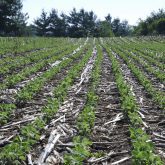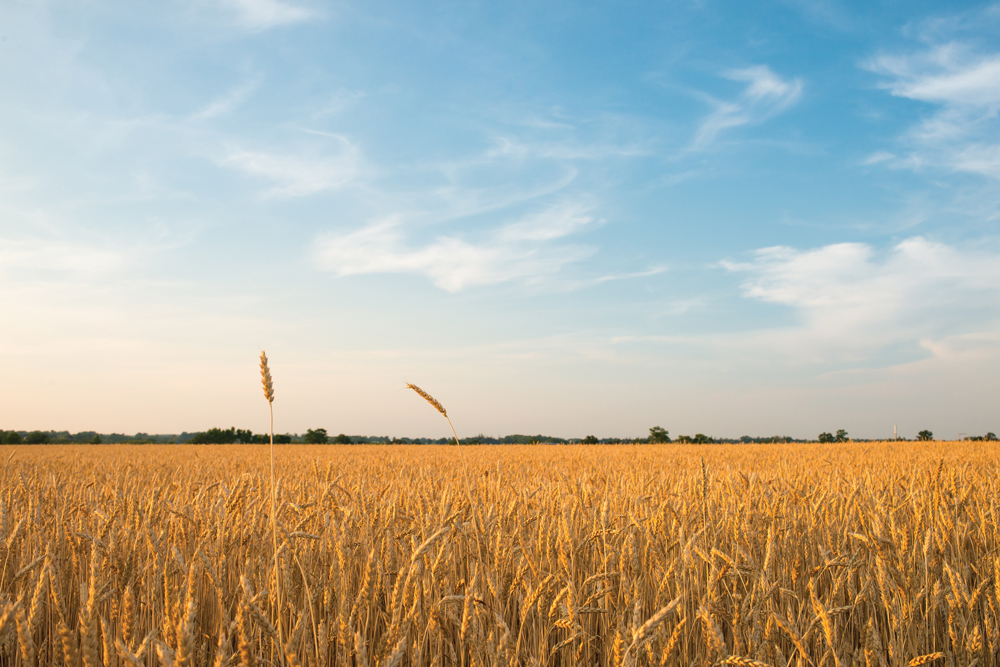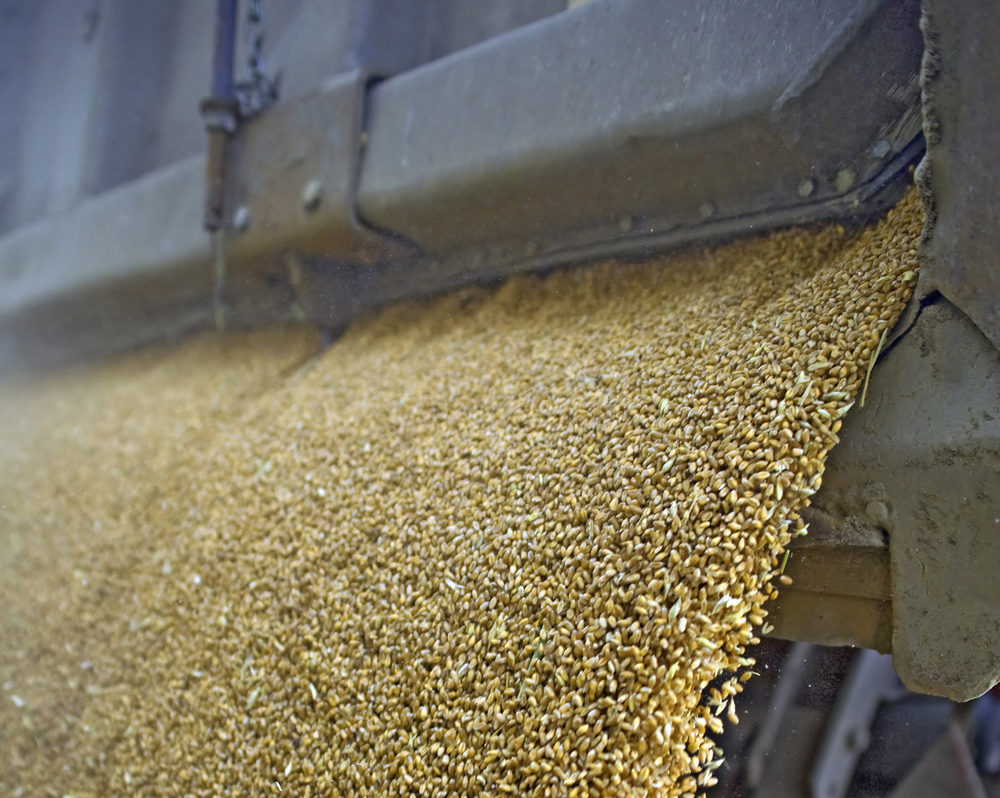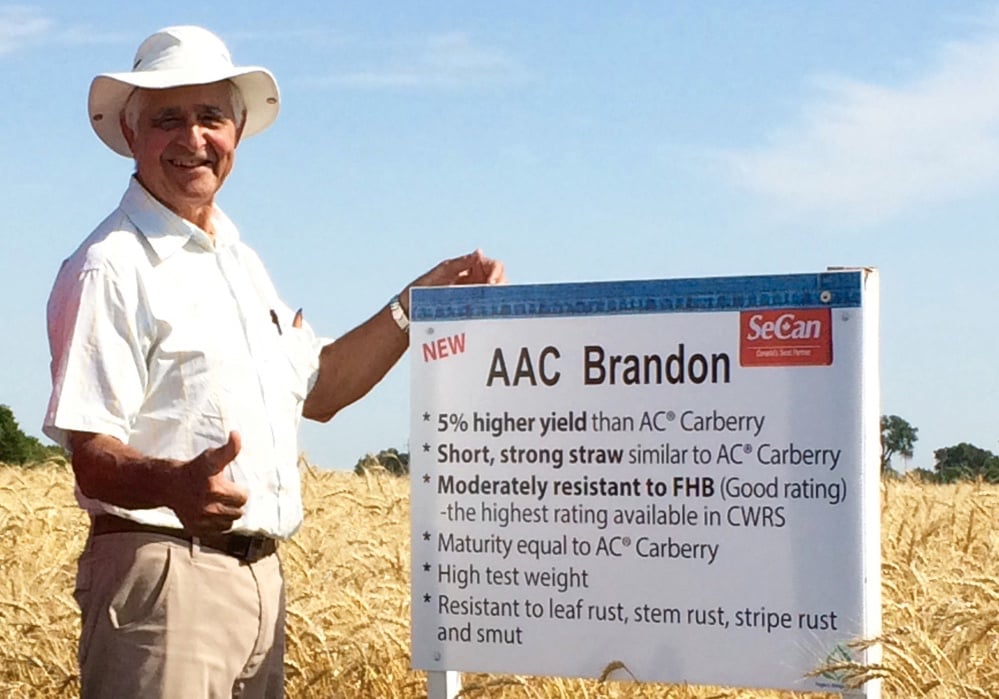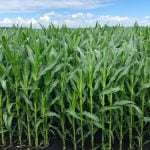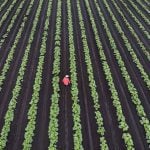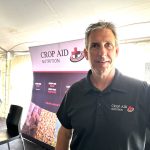In the early days of kernza — a perennial grain crop related to wheat — plant breeders at The Land Institute in Kansas couldn’t get a government grant to save their lives.
“We got very nice compliments on our writing of the grant proposals and harsh criticism on the value of actually doing the work,” said Lee DeHaan, lead researcher on the project.
Why it matters: Once dismissed as a non-competitor, perennial grains have gained new attention as a potential low-input option for future fields.
Read Also
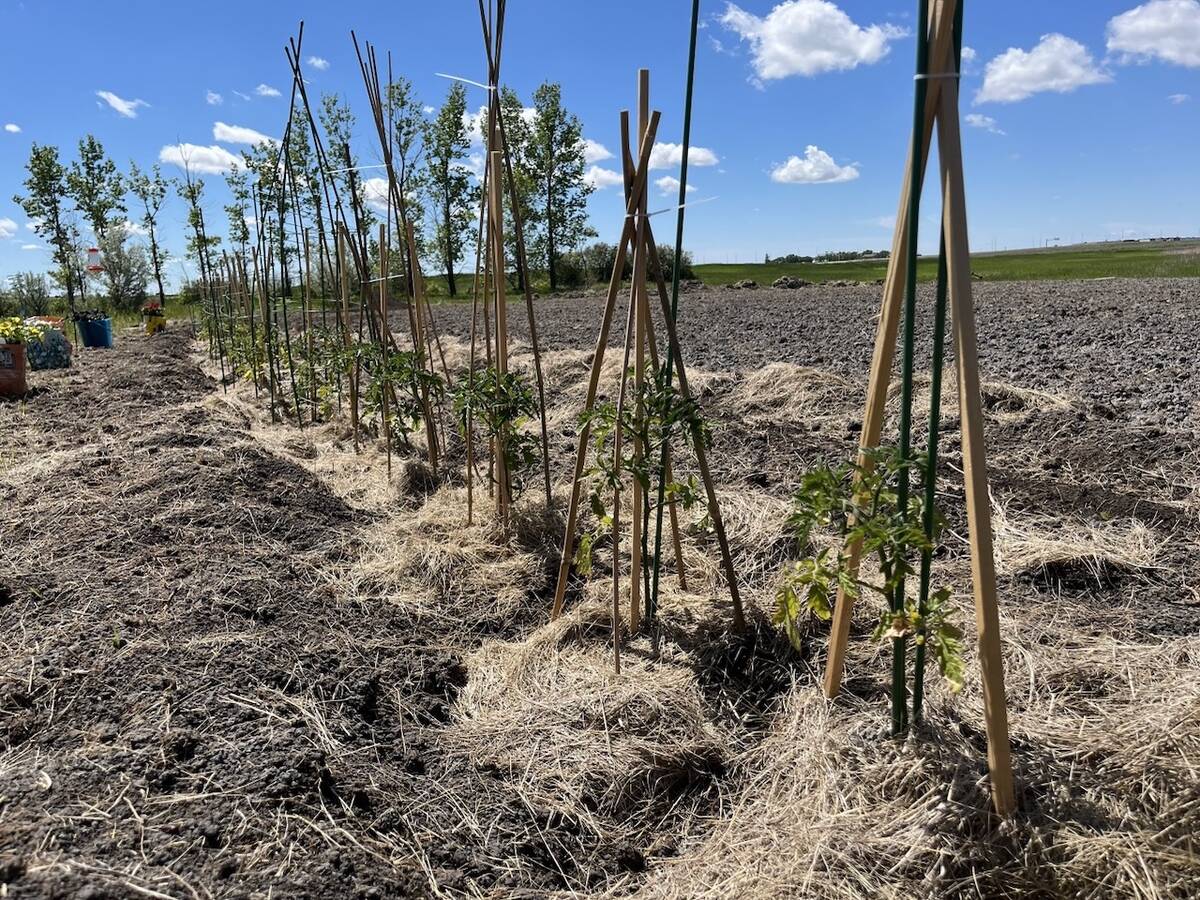
Seeding Indigenous agricultural prosperity
National Circle for Indigenous Agriculture and Food says Indigenous agricultural success needs strong relationships.
As far as the U.S. government was concerned in the early 2000s, a perennial grain was too ‘pie in the sky,’ too risky to put cash behind, and the attitude was not limited to the U.S.
At the University of Manitoba, researcher Doug Cattani, had long run into the exact same thing.
He had asked his own professors, back in the early ’80s, why there weren’t perennial grains. The answer: they couldn’t compete with annuals.
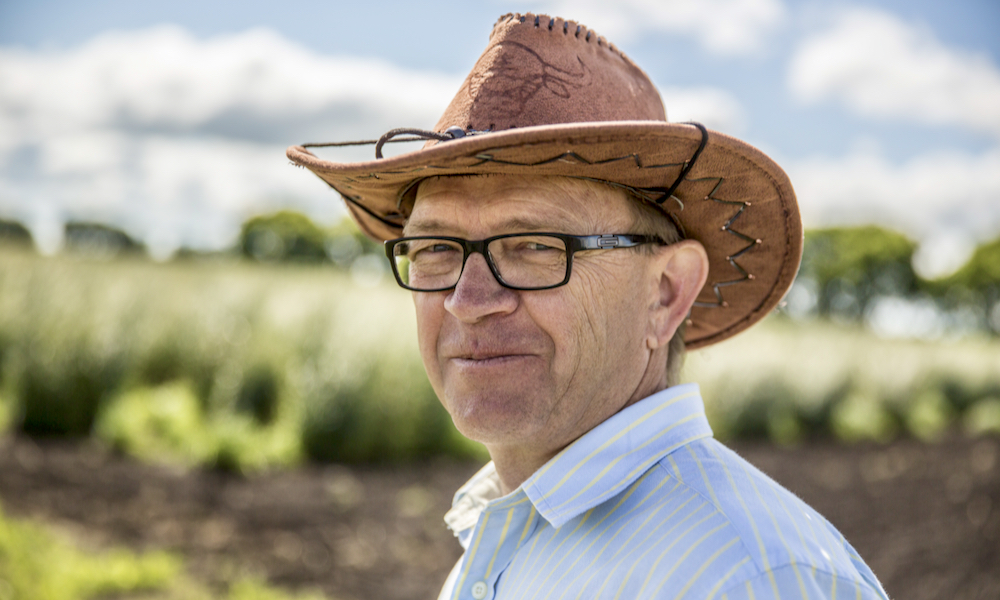
The fact was that, from the perspective of yield, annual grains had, and still have, worked really, really well. Average yield data has shown a generally upwards trend in annual yields since the early to mid-20th century. Between 1993 and 1998, for example, producers could expect an average 31.5 bushels of red spring wheat to the acre (bu./acre), according to data from the Manitoba Agricultural Services Corporation. By 2016 to 2021, that five-year average had jumped to 59.4 bu./acre.
Today, however, the conversation is increasingly becoming about more than just yield. Financially, there has been the hit of supporting high-input crops when those input costs have mounted by orders of magnitude. There is social pressure, with producers urged to supercharge sustainability practices. There is shifting government policy, with fertilizer use becoming an increasingly hot topic between the western provinces and Ottawa.
And while regenerative practices like cover crops and no till have helped, DeHaan said, they haven’t been the hoped-for panacea.
“Researchers… by exhausting all the other obvious choices, are settling on, ‘We need more radical solutions,’” he said.
A voice in the wilderness
It was the mid-’70s, and American agriculture was gaining steam.
Watergate had sent President Richard Nixon packing from the White House, but his bombastic secretary of agriculture, Earl Butz, was still there.
Butz famously told farmers to seed “fencerow to fencerow” as he implemented policies “aimed essentially at transforming American agriculture from its long-lamented position of dependence on government to a new healthy reliance on the world’s free food market,” according to a June 1976 article published in the New York Times.
Later that year, Butz would be fired after making a racist joke.
Large-scale farmers loved him, the New York Times wrote. Environmentalists did not.
His career caused “untold acres to succumb to the plow,” lamented environmentalist publication Grist in 2008, following Butz’s death.
It wasn’t that farmers weren’t concerned about their environment in the early to mid-20th century.
“Catastrophic events like the Dirty ’30s” had made them realize, for instance, that they needed plants to hold the soil together, according to Cattani.
But in the postwar boom, “we had these chemicals coming on the market, and all these other things that we thought were going to be great and make things more sustainable,” Cattani said. “Maybe they thought, you know, we got past that.”
The same year Butz got the boot, Wes Jackson started The Land Institute, a school he hoped students could collaborate and research together without the pressure of grades.
Jackson was captivated by the Prairies’ ability to “run on sunlight” versus monoculture farmings’ reliance on inputs. Prairies, he noted, were a mix of perennials. He asked — Can we develop “domestic prairies” in farming? Can perennials and high yield go together?
That notion was what inspired Bob Rodale and his Rodale Institute to take a crack at what would become kernza.
Wild triga
At Rodale’s behest, researcher Peggy Wagoner began her search for a viable perennial crop in the early 1980s.
It began by gathering a mix of species — grasses, legumes, sunflower — and planting them in a ‘herbiary,’ just to see what they looked like, Wagoner said.
A clear standout was intermediate wheatgrass.
Intermediate wheatgrass is a grass with seeds that — while much smaller than wheat kernels — looked like they could be a grain. It looked like it could lend itself to mechanical harvesting and was relatively easy to thresh.
It had also long since been a forage crop in the United States, so there was already knowledge on how to grow it.
To make it a viable cash crop, however, Wagoner needed to advance traits that separate wild from domestic grains, such as less pod shatter. She also needed to increase seed size — a lot.
By the late ’90s and early 2000s, Wagoner and her colleagues had increased seed size to about five to seven milligrams (mg) per seed, in DeHaan’s estimate, bigger, but still a fraction of wheat’s 30- to 35-mg range.
The Rodale Institute called the crop “wild triga” to distinguish it from intermediate wheatgrass.
Wagoner worked on wild triga until the late ’90s. In the early 2000s, The Land Institute decided to take a swing at the project as a side venture.
From Russia with false hope
DeHaan came to The Land Institute specifically to work on hybridizing perennial grass with annual wheat, something scientists had pursued at least as early as the 1920s.
At the time, hopes were high.
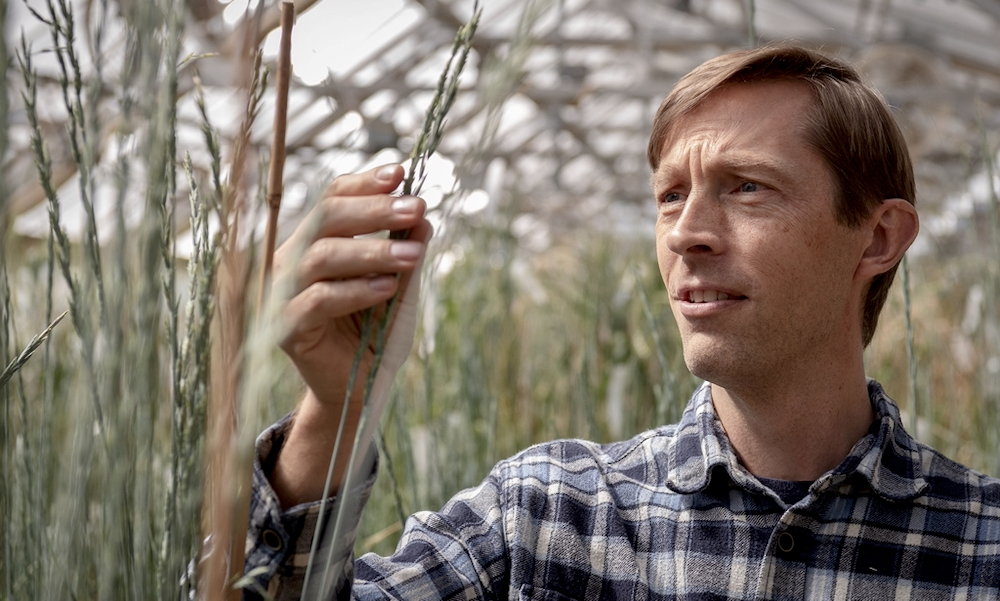
In 1934, Danish-American botanist Neils Ebbesen Hansen paid a visit to the Soviet Union on invitation from the Lenin Academy of Agricultural Sciences. At a Siberian research station, he met N.V. Tzitzin who, among many projects, was working on a perennial wheat hybrid, “with that almost feverish zeal which characterizes all the gigantic industrial and agricultural endeavours now underway in the new Russia,” Hansen said in his 1941 biography.
Hansen’s glasses, it seemed, were rosy when it came to Soviet farming — recently collectivized by force.
“Already these men have achieved a perennial wheat,” Hansen gushed. “The task which remains is to improve further the quality of the plant by breeding selection.”
It was a development that Hansen suggests farmers — just emerged from the Dirty ’30s at the time of publishing — wanted. It held the potential to do away with annual plowing and protecting roots to hold soil in place, he suggested.
That further quality improvement, however, turned out to be the rub.
While Tzitzin would claim relative success in a 1965 paper, his hybrids only live on in laboratories.
“The programs have, throughout history, always got like 90 per cent of the way there and then there’s issues with getting good perenniality and good yield,” DeHaan said.
American research programs kept trying to produce a perennial wheat hybrid — at UC Davis, for instance, beginning in the 1940s and ending in the ’60s.
Urgency, however, diminished as annual crops, inputs and growing practices improved.
Kernza lives again
In the early 2000s, as DeHaan and his colleagues prepared to take another crack at it, they didn’t expect to succeed quickly. In 2001, he and his colleagues wrote a paper saying they couldn’t complete their project until technology advanced.
Today, technology has. Modern genomics have allowed plant breeders to test hundreds of plants at reasonable cost and more quickly pinpoint genes that affect perenniality — or lack thereof. It’s now a matter of digging into the genetics and getting them to play nice together, DeHaan said.
Initially, DeHaan thought intermediate wheatgrass — now named kernza — might be a viable crop in 100 years. After two breeding selection cycles, however, he saw dramatic increases in yield.
In one 30-acre field trial, DeHaan asked the farmer to try combining the kernza after harvesting his wheat, which ended up producing about a semi-load of grain.
“Suddenly, it was kind of a paradigm shift for us that actually, maybe this is doable in the nearer term than we thought,” DeHaan said.
The farmer then grazed cattle on the kernza stubble. They baled the residue. A small organic mill made about 5,000 pounds of flour from the grain, which bakeries experimented with, with tasty results.
It started to fall into place, DeHaan said.
Today, other research teams — like Cattani’s at the University of Manitoba, started in 2011 — have joined The Land Institute in developing regionally adapted kernza.
The crop is still, however, a long ways behind wheat yield, and there is still much to learn about how the plant works at a field scale.
In 2019, Cattani said they’d about doubled their average yield to 1,000 kilograms per hectare (about 15 bu./ac.). The yield remains roughly the same today, putting it at about a quarter of wheat’s average yield in the province.
“It’ll take us a lot of time,” he said.
To improve the crop’s viability, Cattani has partnered with other researchers to study how it works as a dual-purpose crop — first harvesting for grain, then grazed as regrowth.
Researchers also planned to see how kernza fared as habitat for waterfowl and songbirds, according to a 2020 University of Manitoba webinar.
Perennial hopes
There are now more than 40 perennial grain research projects around the world, including in Argentina, China, Germany and Australia, according to a 2022 report from Spanish researchers in the journal Agriculture, Ecosystems & Environment. They’re working on wheat, rice, maize, rye, oats, barley, sorghum and others.
It’s for reasons that Wes Jackson would probably have recognized in 1976.
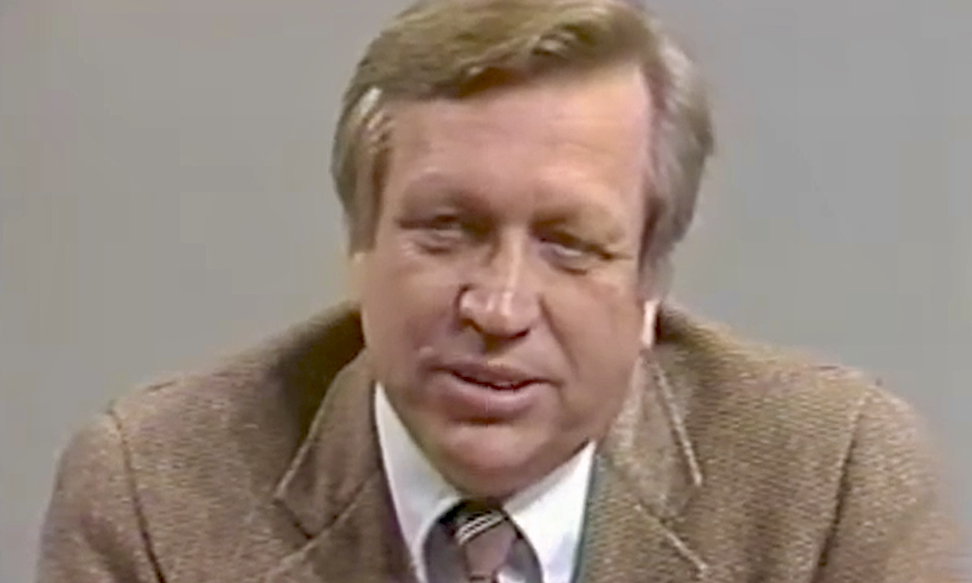
Twentieth-century agriculture “generated a loss of soil due to erosion, a problem that some authors quantify at one-third of the arable surface of the planet,” the paper says.
The same paper bashed intensive annual monocropping for water contamination, fuel consumption, soil management reducing organic carbon and reduction in biodiversity “at unprecedented levels.”
Since perennials would rarely need replanting or require tillage, production costs should decrease and field management tasks would decrease, the Spanish researchers wrote. Reduced soil disturbance would promote biodiversity, such as among soil-dwelling insects, and lend itself to deeper, more developed root systems more efficient in nutrient uptake and water infiltration, and better at carbon sequestration and improving soil quality, the report added.
In short, all things the federal and provincial governments are now throwing money behind, through mechanisms like Ag Action Manitoba’s beneficial management practice funding.
Down the road, perennials could make biofuels a far more viable sustainability measure, DeHaan added, noting work that would develop switchgrass as a possible corn replacement for biofuel feedstock.
The Land Institute is also working on domesticating silphium, a relative of the sunflower, as an oilseed.
Ultimately, kernza is the “proof of concept” that perennial grains can become economically viable, DeHaan said.
“My dream is that we’ll have a perennial grain that will yield at the same level as annual grain crops do,” he said. “We want to have abundant food production; we want to have a healthy environment and healthy soil, and we want to have an economically viable system and healthy rural communities happening at the same time.”




